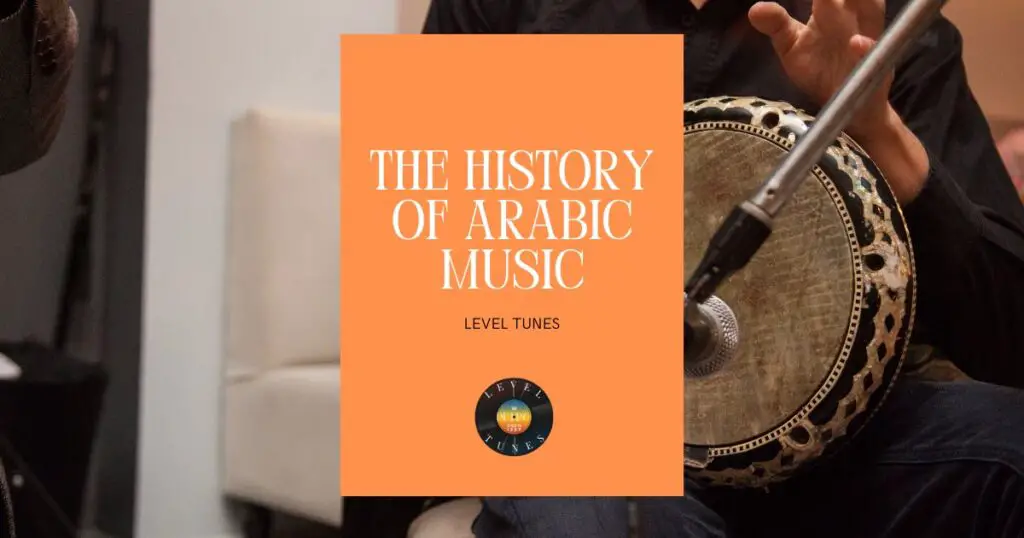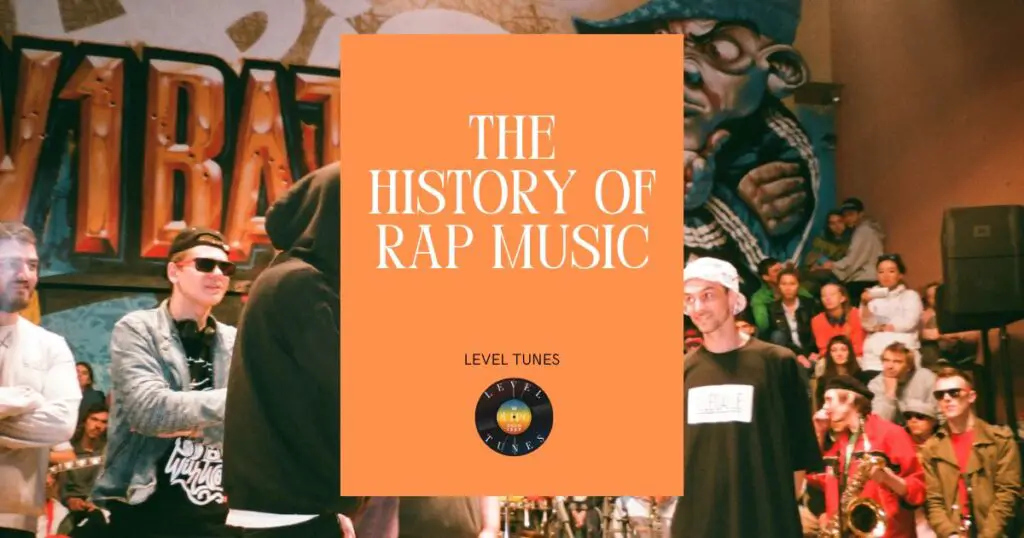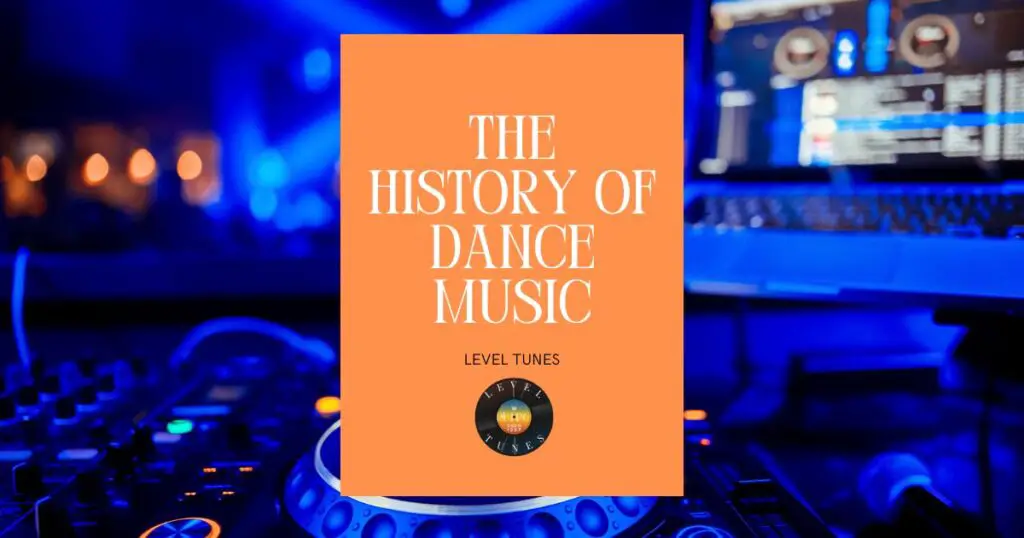Delve into the rich and diverse world of Arabic music, a captivating tapestry woven through centuries of cultural exchange and evolving traditions. From its ancient roots to modern innovations, this mesmerising genre has continually enchanted listeners around the globe.
In this blog post, we unravel the fascinating history of Arabic music, celebrating its unique melodic modes like maqam system and highlighting trailblazing artists who shaped its course.
Key Takeaways
- Arabic music has roots in Bedouin music and tribal instruments during the pre-Islamic period, which emphasised a sense of community among tribe members while reflecting emotions ranging from joy to sorrow during different occasions.
- The Islamic influence on Arabic music can be traced back to Quranic chanting, which relies heavily on maqams for melody. Maqam refers to a system that serves as the basis for both compositions and improvisations in traditional Arabic music.
- During its golden age, court musicians developed complex music theory and notation systems. In Andalusia, a fusion with European styles created a unique genre. Meanwhile, the modernisation of Arabic music led to an incorporation of Western influences into Arab soundscapes while Egyptian and Lebanese Music Industries continue shaping contemporary Arab musical expressions today.
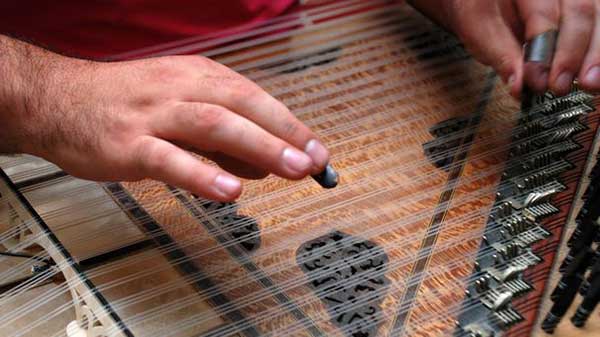
Early Roots And Development Of Arabic Music
Arabic music’s early roots can be traced back to the pre-Islamic period, where Bedouin music and tribal instruments formed the foundation of its sound.
Pre-Islamic Period: Bedouin Music And Tribal Instruments
Delving into the rich history of Arabic music, one must acknowledge the vital role played by Bedouin music and tribal instruments during the pre-Islamic period.
The vast Arabian Peninsula was home to unique artistic expressions that set the foundation for future musical advancements.
Long before Islam’s emergence in Arabia, nomadic tribes celebrated their cultural heritage through various forms of vocal melodies and enchanting recitals. Pre-Islamic Bedouin music emphasised a sense of community among tribe members while mirroring emotions ranging from joy to sorrow during different occasions.
Some prominent examples include chest-slapping dances called ardah, secular songs featuring a combination of voice and stringed instruments like an oud or rebab, and eloquent lines sharing tales about love affairs or heroic feats in battles.
Islamic Influence: Quranic Chanting And Maqam System
The Islamic influence on Arabic music can be traced back to the early roots and development of this rich and diverse musical tradition. One important aspect that played a key role in shaping the musical landscape is Quranic chanting, which relies heavily on maqams for melody.
Maqam, an Arabic term meaning “station”, refers to a system that serves as the basis for both compositions and improvisations in traditional Arabic music.
As devout Muslims worldwide study and recite the Quran, it is no surprise that its melodic rendition found its way into mainstream Arabic culture through various forms of artistic expression.
In fact, Quranic chanting has been an integral part of religious rituals since pre-Islamic times, with professional reciters honing their skills to mesmerise listeners with their enchanting voices.
The maqam system owes much of its success to neighbouring civilisations who influenced Arab musicians during different historical periods. Interestingly enough, many prominent musicians hailed from non-Arab backgrounds but were thoroughly immersed in Arab culture throughout their lives as artists or composers – showcasing once again how fluid boundaries can be when it comes to artistry.
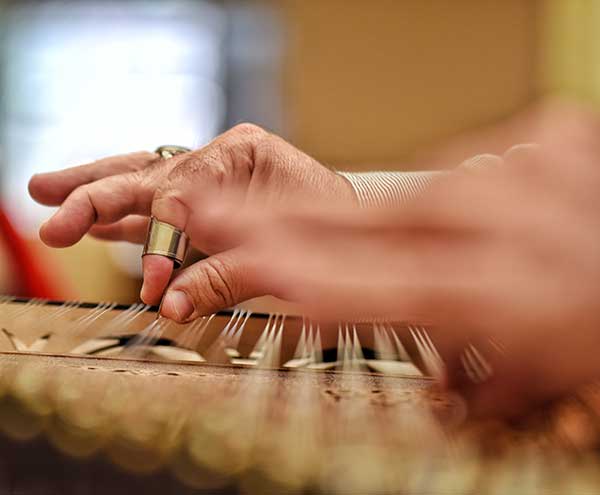
The Golden Age Of Arabic Music
During the Golden Age of Arabic Music, which spanned from the Abbasid Era to the Ottoman Empire, court musicians developed complex music theory and notation systems. In Andalusia, a fusion with European styles created a unique genre.
Abbasid Era: Court Musicians And Music Theory
The Abbasid Era marked a pivotal period in the history of Arabic music, ushering in what many consider to be its Golden Age. An integral aspect of this rich musical tapestry was the role of court musicians and the development of advanced music theory.
Court musicians would entertain caliphs and their courts with their exceptional talent while also pushing boundaries in terms of music theory. The dynamic fusion between traditional Arabic melodies and other influences from as far afield as Persia, India, or even Africa made it possible for these gifted performers to experiment with new sounds and styles.
This newfound creativity provided fertile ground for talented individuals like Ishaq al-Mawsili and Abu Nasr Al-Farabi to make significant contributions that would shape not just Umayyad Empire’s cultural heritage but also reverberate throughout centuries to come.
Andalusian Music: Fusion With European Styles
One of the most interesting aspects of Arabic music is its interaction with neighboring civilizations, which led to some fascinating musical fusions. Andalusian Music is a prime example of this unique blend, developed in 9th century Spain as a fusion of Hispanic-Arabic musical styles.
Andalusian classical music was influenced by the traditions and culture of various civilizations that inhabited the Iberian Peninsula throughout history.
The Andalusian Roma (Gypsies) added new instruments and rhythms to the existing genre such as guitar-like lute or rebab replaced oud while violin-like viola replaced rabana.
Furthermore, Flamenco – another Spanish folkloric form known for its passionate singing and dancing has clear influences from Andalusia’s Muslim past but slowly adopted by Christians after Muslims left in 1492 AD when Catholic monarchs took over Granada ending Muslim rule in Spain.
Ottoman Empire: Classical Arabic Music
The Ottoman Empire played a significant role in the development of Arabic music during its classical era. The Ottomans provided a haven for many musicians and artists, creating an environment that encouraged musical growth and development.
During this time period, numerous percussion instruments such as Tablah (also known as Doumbek) were introduced to accompany various genres prevalent especially during festivals like weddings.
Of note also was the emergence of Takht ensembles consisting of lute-type instruments (Oud), percussion instruments including ‘riqq’ (a type tympanum) or daf (frame drum), plucked zither-like Qanun among others.
With its rich history and diverse influences from around the Islamic empire area; Classical Arabic music remains one of the most prominent forms of Middle Eastern music across cultural boundaries.

Modernization And Western Influence In Arabic Music
During the 20th century, Arabic music underwent major changes and modernization, partly due to the influence of Western music and instruments. Egyptian and Lebanese music industries played a significant role in this trend, with many famous Arab artists incorporating elements of Western pop music into their work.
Egyptian And Lebanese Music Industries
Egypt and Lebanon have been at the forefront of the modernization and westernization of Arabic music. The Egyptian music industry, in particular, has played a significant role in shaping modern Arab music with its fusion of traditional and western elements.
Cairo is known as the hub of Arabic pop culture, producing some of the most iconic artists such as Umm Kulthum, Abdel Halim Hafez, and Amr Diab. Meanwhile, Beirut has also played a vital part in developing contemporary Arabic music by embracing various influences from Mediterranean and Western cultures.
Lebanese music stands out for its diversity that includes styles like Tarab (classical), Fairuz-style folk songs, Hip-hop fusion tracks, etc., making it one of the most eclectic musical scenes globally.
Incorporation Of Western Instruments And Harmonies
As Arab musicians aimed to keep up with the West’s modernization, Western influences began to seep into Arabic music. The incorporation of Western instruments and harmonies helped advance Arabic musical performance.
One of the earliest examples was in Egypt, where the harp was introduced by Muhammad ‘Abduh in 1902.
The introduction of Western musical instruments into Arab music took place in three major stages. First was a period from 1850-1915 when European composers became interested in incorporating Middle Eastern melodies, musical scales, and rhythmic patterns into their works while also introducing orchestral accompaniments.
In the early part of the 20th century, musicians began forging a new musical language that combined Arabic music theory and Western instruments such as pianos or saxophones.
While some saw these changes as positive developments for both cultures’ artistic expressions – opening doors for cultural exchange – others view it as a threat to traditional Arab music forms rooted deep within history and culture; however one looks at it though, there is no denying how much things have changed since the time when Bedouin tribes would perform pieces passed down orally through generations without any formal systemization being applied or maqam-based standardization evolving over centuries until today’s contemporary interpretations blending Islamic chanting traditions with electronic beats that appeal not just regionally but globally too!

Regional Variations In Arabic Music
North African music incorporates elements of Berber and sub-Saharan African musical traditions, while Gulf music features the use of stringed instruments like the oud and saz.
North African Music
North African music is a rich and diverse crossroads of many traditions, including Mediterranean, Berber, Bedouin, Near Eastern, and Turkish influences. The art music of the region has followed the outline of Arabic and Andalusian classical music for centuries.
From Maghreb to Egypt and beyond towards the Middle East and Persian world, the music of this region has been influenced by ancient Egyptian, Greek, Kurdish, Assyrian or even North African sounds.
It’s fascinating how these musical traditions blend together in unique ways that reflect each country’s particular history and cultural identity.
Gulf Music
As a music lover, you’ll be interested to know that Gulf Music, also known as Khaleeji music, is a modern genre of Arabic music that has gained popularity in recent years.
The region of the Arabian Gulf has its unique style of music, reflecting the cultural mix of the area. With influences from Africa and Asia, Gulf Music incorporates traditional instruments such as oud and drums with Western-style harmonies and electronic beats.
The lyrics often tell stories rooted in Bedouin culture about love or national pride. Even though some may view it as commercialized versions of older styles such as Fijri or Sawt which are specific to certain countries like Oman or Bahrain respectively but many fans see it as an exciting new development, bringing local sounds into the international mainstream while preserving regional traditions.
Levantine Music
Levantine music is a type of Arabic music that is associated with the Near Eastern region. This regional variation has been influenced by many different cultures, including Arabic, Mediterranean and Western musical traditions.
Lebanese music, in particular, is known for its diversity and fusion of these influences.
Tarab (meaning “enchantment” or “rapture”) is an Arab musical tradition deeply rooted in the Levant which evaluates a composition based on its emotional effect on listeners.
This means that musicians strive to create pieces of music that evoke powerful feelings while maintaining technical excellence.
Traditional Arabic Musical Instruments
Traditional Arabic music is characterized by the use of instruments such as the oud, qanun, and nay, which have undergone significant evolution over time.
Oud, Qanun, Nay, And More
As a music lover, I’m excited to share with you some of the traditional musical instruments that have been an integral part of Arabic culture for centuries. Here are just a few:
- Oud: This pear-shaped stringed instrument is often referred to as the “king” of Arabic instruments. It has been played in the Middle East for over 5,000 years and can produce a range of tones from deep and mellow to bright and sharp.
- Qanun: The qanun is a melodious plucked instrument with over 70 strings stretched across a flat wooden soundboard. It’s perfect for displaying virtuosity and playing rapid scales.
- Nay: The nay is a long, thin flute made of reed or bamboo and is one of the oldest musical instruments still in use today. It produces breathy, haunting melodies that are especially popular in Egyptian music.
- Violin: Though not native to Arabic music, the Western violin has been incorporated into some Middle Eastern ensembles since the 19th century and is sometimes used to provide melodies or rhythmic accompaniment.
These four instruments are just a small sample of the variety of traditional Arabic musical instruments out there – each with its own unique history, sound, and cultural significance.
Evolution Of Instrument Design
As a music lover, you may be interested to know that the design of traditional Arabic musical instruments has undergone significant evolution throughout history. The oud, for example, originally had a pear-shaped body with only five strings.
Over time, it evolved into its current form with 11 or more strings and a larger rounded body for better sound projection.
Interestingly, many Arabic instruments have also been influenced by neighboring civilizations over time. For instance, the nay flute was likely inspired by ancient Greek flutes brought to Egypt during Alexander the Great’s conquests in the fourth century BCE.
Overall, these innovations and influences have led to a diverse array of musical instruments within the traditional Middle Eastern music genre that are still widely used today by musicians across various regions and genres.
Famous Arabic Musicians Through The Ages
Arabic music has produced many famous musicians throughout history, such as the legendary Umm Kulthum and Fairuz, whose contributions have shaped the genre in unique ways.
Umm Kulthum, Fairuz, And More
When it comes to famous Arabic musicians, there are many icons who have made a significant impact on the music world. Here are a few notable names that any music lover should know:
- Umm Kulthum: Known as the “Star of the East,” Umm Kulthum is one of the most famous Arabic singers of all time. Over her 60-year career, she recorded about 300 songs and became an important cultural icon in Egypt and throughout the Middle East.
- Fairuz: Another legendary singer from Lebanon, Fairuz is considered one of the greatest Arabic singers of modern times. She led the creation of a new musical language that fused traditional Arabic sounds with Western influences.
- Amr Diab: A contemporary pop star from Egypt, Amr Diab has been called the “Father of Mediterranean Music” for his blend of Arabic and European styles.
- Mohamed Abdel Wahab: One of the most influential composers in Arabic music history, Abdel Wahab wrote hundreds of songs over his career and worked with many famous singers.
- Warda Al-Jazairia: Another iconic singer from Algeria, Warda had a powerful voice that was known for its emotional depth.
Whether you’re interested in classical Arabic music or contemporary pop hits, these musicians are all worth listening to for their melodic interpretations and cultural significance.
Contribution To Arabic Music History
Arabic music has made significant contributions to the history of world music. Its ancient roots and diverse regional styles have influenced many genres globally, from classical music to contemporary pop.
One such example is Andalusian Music, which emerged in Spain during the Islamic rule, combining African and European musical traditions with Arabic melodies.
Another notable contribution is the maqam system, a complex framework for improvisation that evolved into an integral part of classical Arabic music. Over time, Arabic instrumentalists also developed unique instruments such as the oud and qanun, which remain popular today.
Arabic Music In Film
Arabic music has played a significant role in the score of Egyptian and Lebanese cinema, with composers such as Mohamed Abdel Wahab and Baligh Hamdi contributing to the development of Arabic film music.
Egyptian And Lebanese Cinema
As a music lover, it’s fascinating to explore the integral role of Arabic music in cinema, particularly in Egypt and Lebanon. Egyptian cinema has a long history of incorporating Arabic music, with some of the earliest full-length films featuring music as a prominent element.
In Lebanese cinema, composer Gabriel Yared is known for his contributions to film scores, including his work on “The English Patient” which won him an Academy Award.
Overall, exploring how Arab culture has influenced and been influenced by other cultures through its rich musical history adds depth and context to both cinema and Middle Eastern culture as a whole.
Development Of Arabic Film Music
As Arabic music evolved, it began to make its way into film scoring. This melding of musical traditions created something truly unique, with the incorporation of traditional Arabic instruments like the oud or qanun alongside Western orchestration.
However, this marriage between Arabic music and cinema hasn’t always been smooth sailing.
Despite these obstacles, there have been numerous movies that have tastefully incorporated Arabic music into their soundtracks. Take for example the classic Egyptian movie “Shafiqa and Metwali”, which featured beautiful compositions by composer Mohamed Abdel Wahab.
Arabic film composers continue to push boundaries in their craft while incorporating modern technology and new trends in world music to create innovative new sounds for both classical Arab cinema and emerging independent films alike.
Contemporary Arabic Music
Contemporary Arabic music is a fusion of traditional and western styles, incorporating electronic elements and collaborations with international artists.
Fusion With Electronic And Western Music
Contemporary Arabic music has enriched its traditional heritage by combining traditional instruments with electronic and Western music. This fusion was first introduced in the late 1960s, pioneered by Lebanese singers like Fairuz and Abdel Halim Hafez who experimented with incorporating electric guitars, synthesizers, and drum kits into their sound.
Famous artists like Natacha Atlas are known for cross-cultural fusions that blend Arabian tunes with hypnotic beats of electronica to create a sound that is distinctly modern yet unmistakably Middle Eastern.
The acclaimed Dufay Collective collaborated with traditional Arab musicians to rediscover a unique fusion of East-meets-West sounds via ancient medieval manuscripts dating back over a thousand years.
Role Of Social Media And Streaming Platforms
As a music lover, I’m always on the lookout for new sounds and artists to add to my playlist. Thanks to social media and streaming platforms, discovering contemporary Arabic music has become easier than ever before.
What’s more exciting is that many upcoming Arab musical artists have been gaining traction globally thanks to online distribution channels.
The likes of Omar Souleyman from Syria or Mashrou’ Leila from Lebanon are making waves in the global music scene due to their unique fusion styles and use of traditional instruments.
Social media influencers with millions of followers are also helping promote regional variations in Arabic music by sharing their favorite songs and artists with their audiences.
International Recognition And Collaboration
As Arabic music continues to evolve and gain popularity, artists from the Arab world are increasingly collaborating with musicians from around the globe. This cross-cultural exchange has led to exciting fusion music that blends traditional Arabic sounds with Western and other global styles.
For example, Lebanese singer Nancy Ajram teamed up with international DJ Marshmello on a hit single “Chasing Colors”, which successfully combined her vocals in Arabic with his electronic beats.
These collaborations have helped introduce contemporary Arabic music to a wider audience and foster greater understanding between cultures through the universal language of music.
Preservation And Future Of Arabic Music
Efforts to preserve and digitize Arabic music are essential in ensuring its longevity and accessibility for future generations. As new artists continue to emerge, the fusion with electronic and Western music opens up exciting possibilities for the future of Arabic music.
Efforts In Preservation And Digitization
As a music lover, I find it heartening to know that many preservation and digitization efforts are underway to ensure traditional Arabic music endures for future generations.
These projects involve preserving archives, photographs, maps, recordings and more in Arabic-speaking regions like the Middle East and North Africa.
Efforts have also been made to preserve cultural heritage sites across the Arab world that hold significant historical value. This includes lobbying for the preservation of crafts, cultural landscapes, and places of great significance in the region’s history.
Emergence Of New Artists And Genres
As the global music industry continues to evolve, a new wave of Arab musical artists are gaining traction both in the region and abroad.
These emerging artists bring fresh perspectives to traditional Arabic music styles by incorporating new sounds and experimenting with fusion genres.
For example, Lebanese singer Yasmine Hamdan combines traditional Arabic melodies with electronic beats, while Egyptian band Cairokee blends rock influences with classical Arabic music.
Future Directions For Arabic Music
As Arabic music continues to evolve, there are several future directions that it could take. One potential direction is the continued fusion of traditional Arabic musical styles with electronic and Western styles, as seen in recent collaborations between Arabic musicians and international artists.
Another important future direction for Arabic music is education and cultivation of new talent. It is crucial to ensure the preservation and transmission of this cultural heritage by providing access to resources such as training programs, workshops, and mentorship opportunities for aspiring musicians.
Lastly, efforts towards digitization can aid in preserving historical recordings, which were previously difficult or impossible to access.
In conclusion, the future holds great promise for Arabic music as long as preservation measures remain a priority alongside adaptation and innovation.The intercultural exchange between different communities continues being appreciated positively thus propelling arabic musics’ popularity around the world.
Conclusion
In conclusion, the history of Arabic music is a rich tapestry that weaves together a myriad of cultural influences and traditions. From its early roots in pre-Islamic Bedouin music to the golden age of court musicians and classical composers, Arabic music has undergone significant evolution throughout the centuries.
The fusion with European styles during Andalusian times, incorporation of Western instruments and harmonies, regional variations in sound, famous musicians like Umm Kulthum and Fairuz- all demonstrate how Arab culture has contributed significantly to world music.
Today’s contemporary Arabic music incorporates electronic beats with traditional sounds while also embracing international collaboration through social media platforms.
Thanks for reading.
TBone

